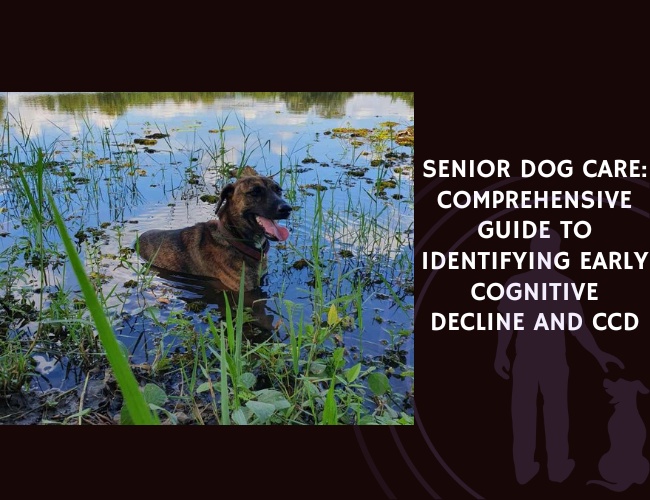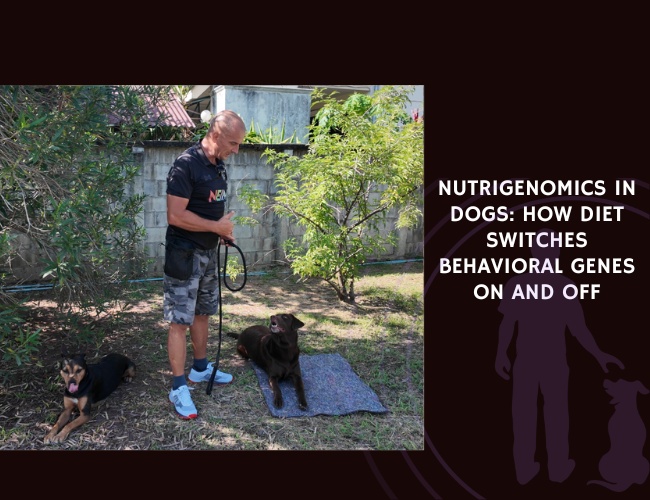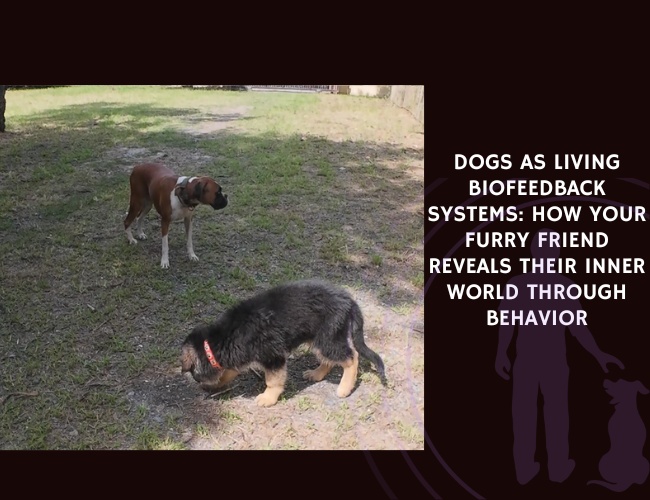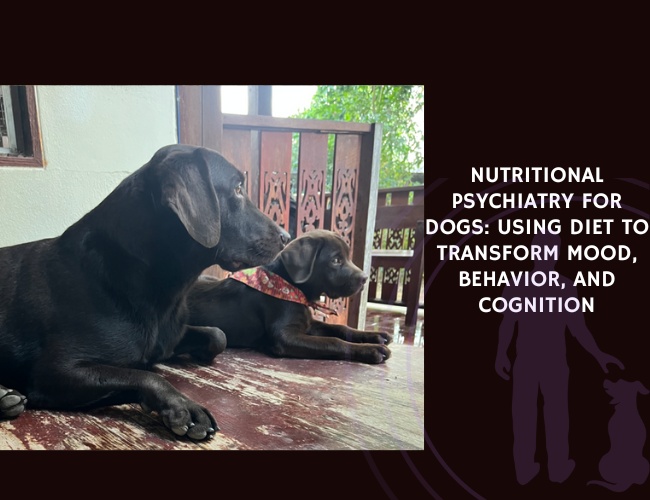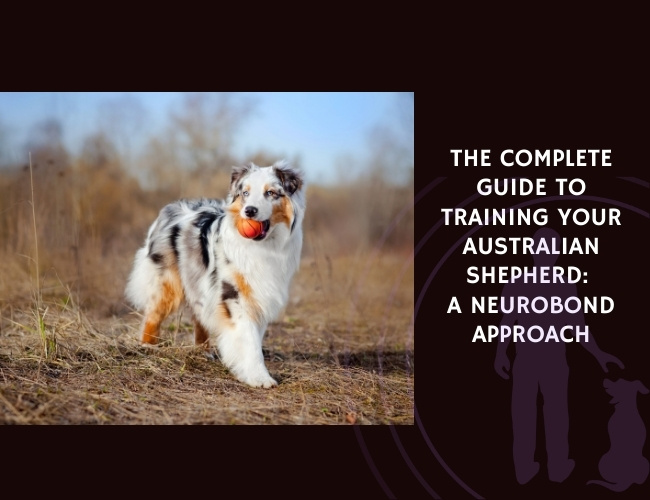Introduction to Canine Cognitive Dysfunction (CCD)
What Is CCD and Why Does It Matter?
Canine cognitive dysfunction (CCD) is a condition that affects the brains of older dogs, similar in many ways to how Alzheimer’s disease (AD) impacts humans. CCD develops slowly, typically in dogs over 7 years old, and leads to noticeable changes in memory, awareness, and behavior. Owners might see their senior dogs becoming confused, less interested in play, or struggling with daily routines.
As our beloved dogs age, their brains undergo changes that can affect their quality of life. Understanding and recognizing CCD is the first step in giving senior dogs the care and support they deserve. Identifying cognitive decline early means we can help them maintain comfort, dignity, and joy in their golden years.
Parallels With Alzheimer’s Disease in Humans
The similarities between CCD in dogs and Alzheimer’s in people are striking. In both conditions, abnormal proteins like β-amyloid accumulate in the brain, leading to cell damage. Dogs with CCD can experience hippocampal atrophy—a shrinking in the brain region tied to memory, much like what’s seen in humans with AD. Other changes include brain inflammation, build-up of tau proteins, and even network losses that reduce how different parts of the brain communicate with each other.
Because of these shared traits, scientists value dogs with CCD as a model for studying therapies and early detection strategies for Alzheimer’s disease as well.
The Power of Early Detection
Spotting CCD early is crucial. Subtle behavioral changes—like getting lost in a familiar backyard, altered sleep, or new anxieties—can go unnoticed or be mistaken for “normal aging.” Yet, early symptoms are often the best opportunity to intervene. Timely care can include lifestyle changes, nutritional support, supplements, and gentle routines that help slow the disease’s progression.
Owners play a key role in recognizing and reporting changes. Learning about CCD empowers families to seek timely veterinary advice and start supportive measures as soon as signs appear. Early action can make an incredible difference in a senior dog’s comfort and happiness, paving the way for more precious moments together.
Let’s continue by exploring the fascinating neurobiology behind CCD and the changes that happen within the aging canine brain.
Understanding the Neurobiology of CCD
Neurodegenerative Changes in Senior Dogs
Cognitive changes in older dogs can be traced back to specific processes in the brain. One of the key features is the buildup of proteins, like β-amyloid, which form sticky plaques between nerve cells. These plaques can block signals and disrupt normal brain function. Another protein, tau, becomes overly phosphorylated (a chemical change), leading to tangles inside brain cells. This makes it tough for cells to communicate and can even cause them to die off. Both of these changes—β-amyloid plaques and phosphorylated tau tangles—are major hallmarks of canine cognitive dysfunction (CCD) and are also seen in human Alzheimer’s disease (AD).
Patterns of Brain Atrophy
As dogs age and CCD progresses, the brain can start to shrink—a process called atrophy. This is especially noticeable in the hippocampus, the part of the brain responsible for memory and learning. Imaging studies using Magnetic Resonance Imaging (MRI) have shown that senior dogs with CCD often have reduced hippocampal volume. This change can be detected even before major behavioral symptoms appear. It’s interesting to note that the frontal lobe may also show changes, sometimes shrinking faster with age. However, some evidence suggests that a stimulating environment might help keep the hippocampus healthier for longer.
Parallels with Human Alzheimer’s Disease
The similarities between CCD in dogs and Alzheimer’s in humans go beyond just symptoms. Both conditions feature β-amyloid plaques, tau tangles, neuron loss, and ongoing inflammation in the brain. These changes can weaken the network of connections between brain cells and disrupt normal thinking and memory. Also, dogs with CCD sometimes have a “leaky” blood-brain barrier—a protective shield that, when damaged, can let in harmful substances and speed up brain decline.
By recognizing the shared biological roots of CCD and human Alzheimer’s, researchers see dogs as a valuable model for studying age-related cognitive issues in both species.
This clear understanding of how brain changes drive early symptoms in dogs will help us focus on spotting the first warning signs—before these changes impact day-to-day life.
Early Behavioral Signs of Cognitive Decline
Identifying Changes Using the DISHAA Framework
Recognizing early cognitive decline in senior dogs starts with noticing subtle shifts in daily behavior. The DISHAA framework—standing for Disorientation, Interaction, Sleep-wake cycles, House soiling, Activity, and Anxiety—offers an easy way for dog owners and veterinarians to spot early signals.
- Disorientation may look like a dog getting lost in familiar places or failing to recognize people or objects they know well.
- Interaction changes can present as less social engagement, reduced interest in family members, or awkwardness in play that was once enjoyable.
- Sleep-wake cycles often shift, with increased sleeping during the day, nighttime restlessness, or trouble settling down at bedtime.
- House soiling might become an issue even for dogs that have been reliably house-trained for years, as incontinence or accidents in the home develop.
- Activity levels may rise or fall. Some dogs begin pacing, wandering, or exhibit restless behaviors, while others show a marked reduction in interest or energy.
- Anxiety can also escalate, with dogs showing more fear or unease—even in safe, familiar situations.
Spotting Subtle Behavioral Changes
These early signs are often gradual and can be mistaken for normal aging. For example, a dog who forgets learned commands or routines may actually be showing the first signs of cognitive decline. Owners might notice that their pet is easily startled, acts confused when routines change, or is less responsive to their name.
Changes in social behavior are also common. Dogs may withdraw, become less interactive, or even change how they respond to affection and play.
The Importance of Early Awareness
Emotional changes, like new or worsening anxiety, often develop slowly. Sometimes, dogs show only slight differences in sleeping patterns or habits, which makes it easy for owners to miss the warning signs. Owner-reported surveys, such as those based on the DISHAA framework, play a critical role in catching problems early—before a decline becomes severe.
A proactive approach not only supports a dog’s comfort and well-being but also gives families the chance to make loving, informed decisions about ongoing care. Staying attentive to these changes is one of the best ways to support your senior companion as they age.

Diagnostic Tools for Early Detection
Owner-Reported Behavior Surveys
One of the most important tools for spotting early signs of canine cognitive dysfunction (CCD) is the use of owner-completed questionnaires. These surveys empower pet owners to report changes in their dog’s behavior they might see every day. Two widely used tools in this area are the Canine Cognitive Dysfunction Rating Scale (CCDR) and the Canine Dementia Scale (CADES). The CCDR is designed to track changes in activities such as house soiling, disorientation, and sleep-wake routines. In contrast, CADES is especially sensitive to detecting mild to moderate cognitive changes, making it valuable for catching problems early on. Both tools help veterinarians and families work together to spot cognitive issues sooner rather than later.
It is worth noting that while these surveys are hugely helpful, owner observations can sometimes be influenced by personalbias or their dog’s usual temperament. That’s why behavior questionnaires work best when combined with objective assessments and veterinary input. If you notice changes like confusion, altered sleep habits, increased anxiety, or loss of learned commands in your senior dog, filling out a CCDR or CADES survey is a great way to record and share this information with your vet.
Cognitive Assessment Tests
Alongside owner surveys, veterinarians often use hands-on cognitive tests. These assessments measure specific brain functions, like memory and problem-solving, using simple games or puzzles.
- Spatial Memory Tasks: These tests check if your dog can remember the location of a treat or object, a skill that often fades with cognitive decline.
- Food Maze Tests: Here, your dog is challenged to find food hidden within mazes of increasing complexity. Difficulty navigating the maze, especially compared to past performance, can highlight trouble with learning, memory, or attention.
Combining these functional tests with survey scores gives a fuller picture of your dog’s cognitive health, helping detect subtle changes that might otherwise be missed.
Veterinary Screening Protocols
For early intervention, standard veterinary screening protocols recommend that dogs over seven years of age be assessed regularly for signs of cognitive decline. During yearly wellness visits, your vet may ask you to fill out a behavior questionnaire and perform brief cognitive tests. This proactive approach leads to:
- Early detection of even mild cognitive changes
- More effective and timely care plans
- Empowered owners who feel confident to advocate for their pets
This multi-step, collaborative process ensures no single sign gets overlooked. As we continue caring for our aging dogs, recognizing and tracking early symptoms sets the stage for meaningful support throughout their senior years.
Aging. Changing. Remembered.
Senior dogs may move slower, but their hearts still beat for connection.
Cognitive decline doesn’t mean losing your dog—it means learning to meet them where they are, gently, every day. Awareness is your greatest tool.
It starts with subtle signs.
A forgotten routine, a restless night, a moment of confusion. When we recognise these early shifts, we can support the mind as well as the body—with structure, comfort, and care.
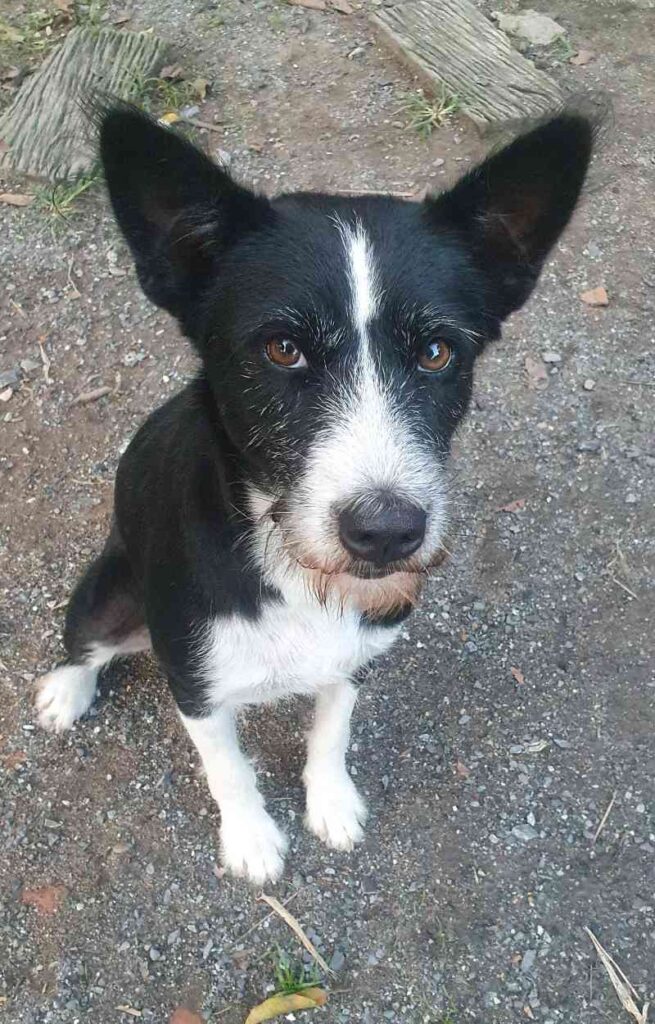
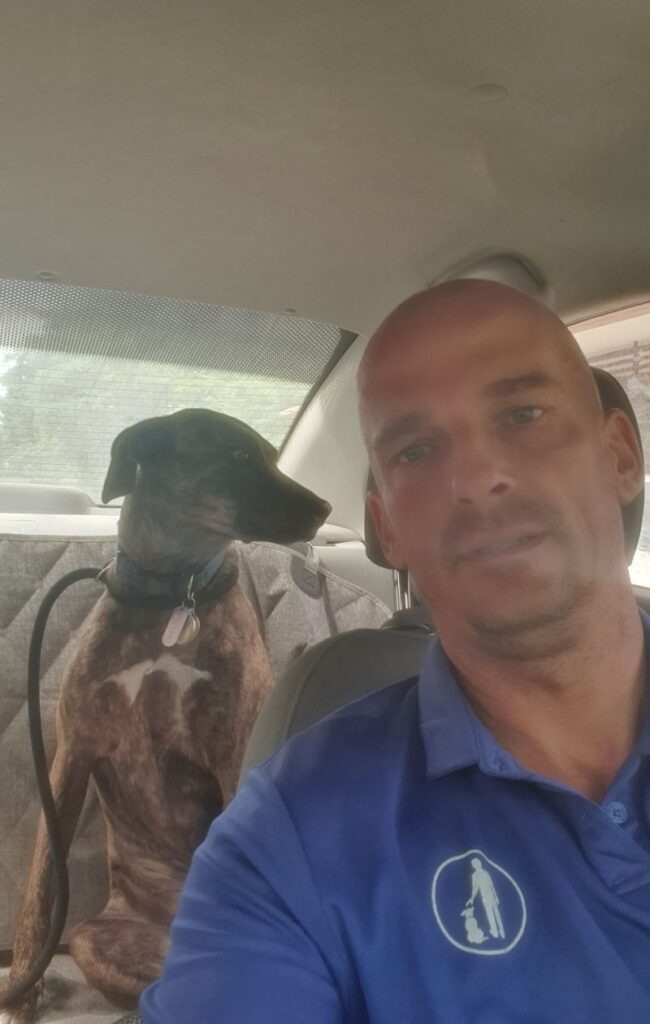
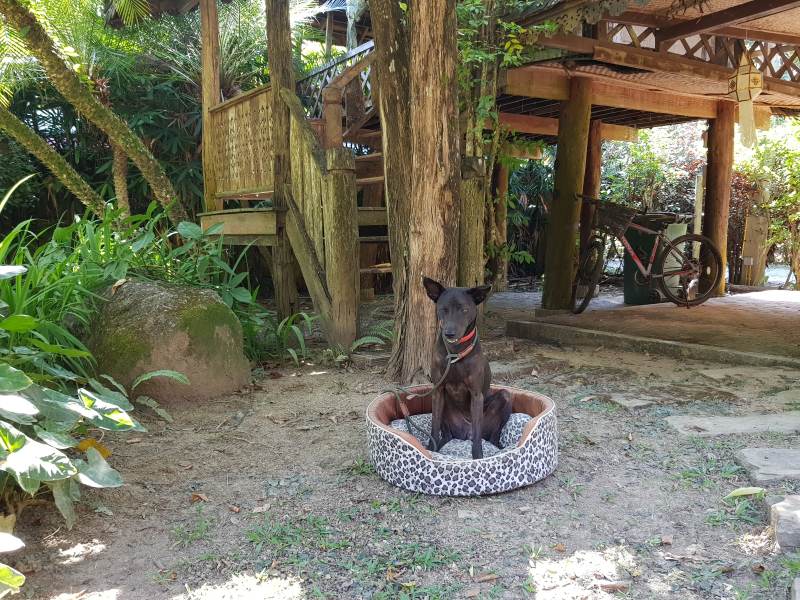
Aging isn’t the end—it’s a chapter.
With understanding, routine, and a few changes at home, we help our dogs feel safe, known, and loved—no matter how time shapes their memory.
Advanced Diagnostic Methods
Neuroimaging and Brain Changes
Neuroimaging plays a vital role in uncovering the physical changes in a senior dog’s brain linked to cognitive decline. Magnetic resonance imaging (MRI) is especially helpful, allowing veterinarians to see patterns like reduced hippocampal volume—one of the most common and reliable findings in dogs with cognitive dysfunction. This type of brain atrophy closely resembles changes found in people with Alzheimer’s disease. Some studies also note differences in the frontal lobe and evidence that environmental enrichment might help slow brain shrinkage in certain cases. These insights highlight how closely aging dogs can serve as models for understanding human brain aging.
Functional MRI and electroencephalography (EEG) provide even more detail. Researchers have observed that dogs with cognitive dysfunction show altered brain network connectivity, especially in regions tied to memory and decision-making. These advanced scans can reveal problems before many visible behavioral symptoms appear, supporting quicker and more precise interventions.
Blood and Cerebrospinal Fluid Biomarkers
Beyond imaging, laboratory tests are becoming powerful tools in the early detection of cognitive dysfunction in dogs. Specific biomarkers in blood can reflect changes happening in the brain. These include retinol-binding protein 4 (RBP4), C-X-C-motif chemokine ligand 10 (CXCL10), and NADPH oxidase 4 (NOX4). Early research suggests that abnormal levels of these markers may signal the beginning of cognitive decline.
Cerebrospinal fluid (CSF) analysis adds another layer of information. Changes in amyloid-beta and phosphorylated tau levels in the CSF often appear before noticeable behavioral changes. This mirrors what is seen in human Alzheimer’s disease and could give veterinarians another tool for early diagnosis and treatment planning.
Wearables and Activity Trackers
Recent years have also seen a growing use of wearable technology in veterinary care. Devices like activity trackers can monitor a senior dog’s movement, sleep, and rest patterns in real time. Subtle changes such as increased restlessness at night, more sleeping during the day, or altered activity levels can be early indicators of cognitive decline, sometimes even before owners notice behavioral changes. While still an emerging area, the potential for wearables to provide continuous, objective data is promising and supports a more proactive approach to senior dog care.
These advanced diagnostic methods empower dog owners and their veterinary teams, enabling them to catch changes early and act promptly. This offers the best chance for positive interventions and a continued good quality of life for our beloved senior dogs.
Nutritional Interventions for Brain Health
Keeping your senior dog’s brain sharp is about more than just play and exercise—diet also matters. In recent years, many pet owners and veterinarians have looked to nutrition as a way to help support cognitive health for aging dogs. If you’ve noticed small changes in your dog’s memory or behavior, these interventions could be a helpful addition to your care routine.
Dietary Changes for Cognitive Function
What your dog eats can play a big role in brain health! Studies suggest that diets rich in antioxidants, like vitamin E and vitamin C, may help protect your dog’s brain cells from damage caused by aging. Foods containing brightly colored fruits and vegetables, such as blueberries, carrots, and spinach, are easy sources of antioxidants you can add to your dog’s diet 🫐🥕. Antioxidants work by neutralizing free radicals—unstable molecules that can cause cellular damage and speed up cognitive decline in older dogs.
The Role of Medium-Chain Triglycerides (MCTs)
Medium-chain triglycerides (MCTs) are a special type of fat found in coconut oil and some other foods. New studies are looking into how MCTs might help senior dogs maintain better brain power. MCTs offer an alternative energy source for brain cells when glucose metabolism becomes less efficient with age. Early findings are promising, showing that MCT-enriched diets can help some dogs stay more alert and engaged. However, more research is underway to confirm their benefits and define the best dosages.
Evidence-Based Supplements and Nutraceuticals
Some supplements, like CogniCaps®, are gaining attention for their potential to improve cognitive function in dogs diagnosed with Canine Cognitive Dysfunction. While small studies show improvements in cognitive scores with such nutraceuticals, more comprehensive research is still needed. Other supplements, such as fish oil and various vitamins, are commonly used, but evidence supporting their use is mixed. Herbal compounds are also under review for their effectiveness in supporting healthy brain aging.
It’s important to remember that every dog is different. What works well for one may not work for another. Discuss any changes in diet or new supplements with your veterinarian to ensure safety and effectiveness. Supportive nutritional care, alongside other interventions, can help your senior dog enjoy the best quality of life as they grow older.
Transitioning beyond nutrition, there are other lifestyle changes and home modifications that can further help your aging dog thrive.

Environmental and Lifestyle Management
Supporting your senior dog through cognitive decline is not just about medications or diet—it’s about creating an enriched, comfortable world for them to thrive in. Thoughtful environmental changes and interactive routines can have a meaningful impact on cognitive health.
Boosting Cognitive Function with Enrichment
Enriching your dog’s environment means giving them opportunities to think, explore, and play. This helps keep their brain active, building resilience against cognitive dysfunction. Some simple ideas include:
- Rotating favorite toys to keep things fresh
- Introducing gentle puzzle toys or treat-dispensing games
- Taking short, varied walks and letting your dog safely sniff and explore new areas
- Using scent trails with treats or favorite scents around the house
These strategies encourage mental engagement and help delay cognitive decline, supporting natural aging and preserving quality of life.
Cognitive Stimulation Exercises and Activities
Just like us, senior dogs benefit from tasks that flex their mental muscles. Even small bits of daily stimulation make a difference. You can try:
- Teaching new tricks, or refreshing basic cues—this offers learning and structure
- Setting up mini-obstacle courses using cushions, boxes, or chairs
- Offering food puzzles or slow-feeding mats for mealtimes
- Engaging in gentle, interactive games like hide-and-seek with treats
Choosing games that match your dog’s abilities will help build their confidence without causing frustration.
Adapting the Home Environment
As dogs experience cognitive decline, certain home adjustments can make their day-to-day life much easier and safer:
- Keep your dog’s routine predictable and consistent
- Minimize rearranging furniture to prevent confusion
- Use baby gates to block stairs or dangerous areas
- Offer nightlights for better visibility during dark hours
- Add comfortable, accessible bedding in favorite locations
Supportive changes like these boost security and comfort as your dog navigates their world.
Caring for dogs with cognitive changes is a journey—filled with small steps and lots of heart. An enriched home life, thoughtful routines, and gentle encouragement make a real difference for your canine companion.
Working with Your Veterinarian
When to Seek Veterinary Care
Noticing changes in your senior dog’s behavior or routines? It might be time to check in with your veterinarian. Early signs of cognitive decline—like disorientation, altered interaction with family, changes in sleep patterns, house soiling, odd activity levels, or increased anxiety—can be subtle. The earlier you seek help, the better your dog’s chances at maintaining a good quality of life. Remember, it’s never too early to voice your concerns. If your dog is over seven years old and you spot these changes, scheduling a wellness visit is a smart move.
What to Expect During a Cognitive Assessment
Your veterinary visit will feel a bit different when cognitive health is the focus. First, you’ll likely be asked to describe any behavior changes you’ve noticed. Owner-completed surveys—like the Canine Cognitive Dysfunction Rating Scale (CCDR) or Canine Dementia Scale (CADES)—play an important role. These questionnaires give your vet useful insights into day-to-day changes that may not surface during a clinic exam.
Your vet may also suggest simple cognitive assessments, like spatial memory tasks or food maze tests, to see how your dog responds to new challenges. In some cases, advanced tests—such as brain imaging or bloodwork—could be recommended if more information is needed for diagnosis.
Creating a Collaborative Management Plan
Working together with your vet is essential. After assessing your dog’s cognitive health, your vet will help you develop an individual plan that fits your dog’s specific needs. This might include:
- Adjusting your dog’s environment to boost safety and comfort
- Creating routines that include cognitive stimulation
- Introducing dietary changes or supplements if appropriate
- Recommending regular follow-ups to monitor progress
Open communication is key. Share your observations and ask questions—your input will help fine-tune your dog’s care. Education and teamwork mean you’ll be better equipped to support your dog through every stage of cognitive aging.
With early attention and a collaborative approach, you and your veterinarian can make a meaningful difference in your senior dog’s life.
Future Directions in CCD Research and Treatment
Emerging Approaches in Early Detection
The future for canine cognitive dysfunction (CCD) research is both promising and rapidly evolving. Researchers are hard at work developing better ways to spot cognitive changes earlier than ever. For example, recent studies are looking at new blood-based biomarkers, such as retinol-binding protein 4 (RBP4), C-X-C-motif chemokine ligand 10 (CXCL10), and NADPH oxidase 4 (NOX4). These biomarkers might help identify cognitive decline before obvious symptoms start—offering hope for more timely intervention.
Additionally, changes in cerebrospinal fluid, like shifts in amyloid-beta ratios and phosphorylated tau, could become important early signals for veterinarians. Excitingly, advanced neuroimaging, including magnetic resonance imaging (MRI) and electroencephalography (EEG), is making it easier to spot brain changes in dogs with CCD much earlier than before. These tools also help distinguish CCD from other age-related conditions.
Wearables and activity trackers may soon have a role in routine monitoring. By detecting shifts in sleep, rest, and daily activity, technology could clue owners in on subtle behavioral changes even before they notice them personally.
New Therapeutic Strategies on the Horizon
On the treatment front, research is exploring the effectiveness of antioxidants, medium-chain triglycerides (MCTs), and various supplements in supporting brain health. While some early studies show promise, more evidence is needed to determine the best ingredients, combinations, and dosages for slowing or improving cognitive decline. There is also interest in herbal compounds and nutraceuticals as new options.
Lifestyle and environmental changes, such as cognitive enrichment and stimulating activities, are being examined as preventative strategies. The hope is that these approaches could delay the onset or reduce the severity of symptoms as dogs age.
Dogs as Models for Human Alzheimer’s Research
One of the most exciting areas of CCD research lies in its close parallels to human Alzheimer’s disease (AD). Dogs naturally develop similar brain changes, such as hippocampal atrophy and amyloid plaque buildup. This makes them a valuable model for understanding human aging and dementia. By studying dogs, researchers can test biomarkers, spot early signs, and try new therapies that might eventually help both pets and people.
With continued research and a stronger focus on early intervention, the outlook for senior dogs and their families is brighter than ever. Owners can look forward to new ways of supporting their beloved companions, ensuring more happy and engaged years together.
Conclusion: Comprehensive Care for Dogs with CCD
The Power of Early Detection and a Multimodal Approach
Addressing canine cognitive dysfunction (CCD) in senior dogs is both a challenge and a vital responsibility. Early detection is key—spotting the first signs of cognitive decline allows families and veterinarians to take timely steps to manage the condition and help dogs enjoy a better quality of life. Using tools like owner-reported surveys, veterinary screenings, and observing for subtle changes in behavior can catch the problem before it becomes severe. Combining these approaches with advanced diagnostics, nutritional changes, and regular check-ups forms the backbone of a multimodal care plan.
A multimodal intervention means we don’t rely on a single method. Instead, we bring together environmental enrichment, dietary support, activity adjustments, and medication (when needed). Studies suggest that stimulating activities, modifications at home, and special diets may all help slow down cognitive decline, although more research is ongoing to fine-tune these options. Supplements and certain nutraceuticals like antioxidants, medium-chain triglycerides (MCTs), and products such as CogniCaps® may be beneficial, but we always advise you to speak with your veterinarian before introducing new supplements or diets.
Owner Education and Awareness: The Heart of Management
No one knows your dog like you do! Your observations and intuition are vital—owners are often the first to see the subtle signs of change. Educating yourself about the DISHAA framework (disorientation, changes in interaction, disrupted sleep-wake cycles, house soiling, altered activity, anxiety) can empower you to recognize issues early. Owner-reported surveys offer valuable insight, but combining them with professional assessments offers the best outcomes.
Regular communication with your veterinary team ensures you feel supported. Never hesitate to ask questions or share new concerns about your dog’s behavior. Compassionate care is always a team effort.
Quality of Life Matters Most
When caring for a dog with cognitive decline, it’s natural to wonder: how much intervention is too much? Striking a balance is important—medical treatments, environmental changes, and supportive routines should always aim to maintain your dog’s happiness and comfort. Pay close attention to what your dog enjoys, and adapt care to fit their changing needs. Ultimately, supporting senior dogs with CCD is about offering understanding, love, and practical steps to maximize their well-being as they age.
Through early action and supportive care, we can help our senior companions continue to share joyful moments with us well into their golden years.

